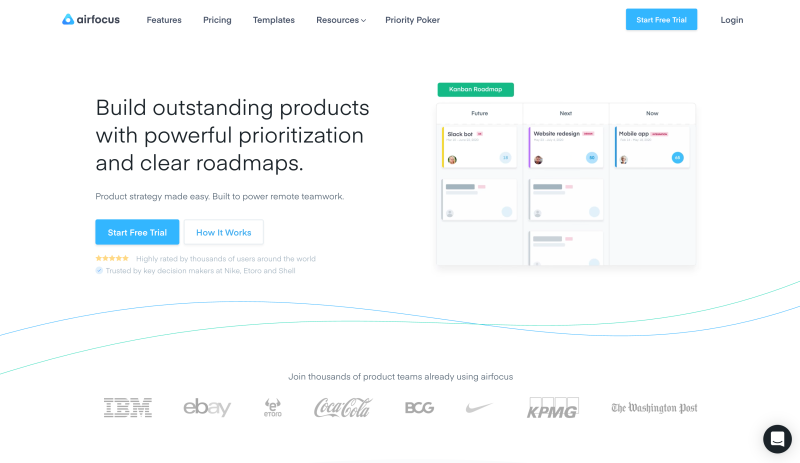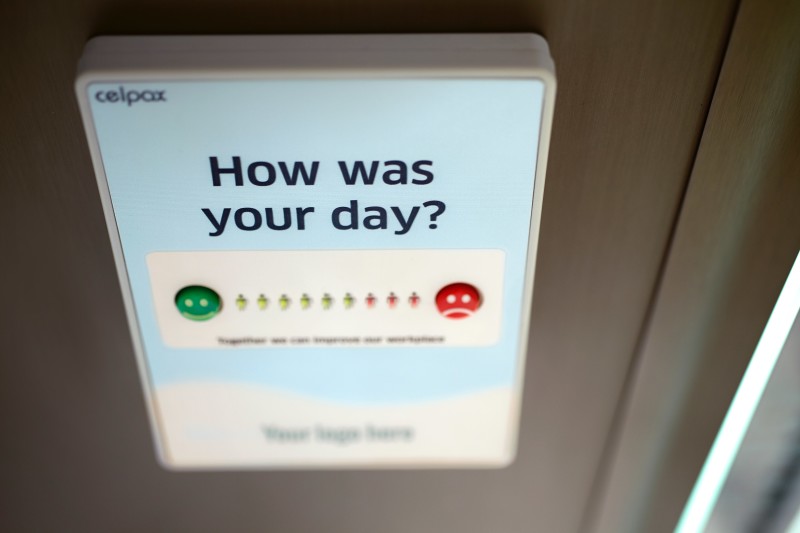
Have you ever taken part in a tug-of-war?
If so, there’s a good chance it happened during one of those “team building” exercises — and there’s a good reason for that. The tug-of-war is an excellent metaphor for what happens when teams come together to pull in the same direction.
(Well, if you’re on the winning side, at least).
It’s this sense of teamwork that we’re going to focus on in this article, answering a simple — but all-important — question:
Do digital products perform better when the product management team works closely with customer support?

It’s a biggie, we know. So we’d better get started.
The conventional disconnect (or, where it’s all been going wrong)
Before we get into the how of aligning PMs and customer-facing teams, let’s first look at the why.
This all begins with the deeply rooted conventions present in many SaaS and tech companies across the world.
Put simply, it’s a silo problem.
Almost by default — and through no mal-intent — both product teams and customer teams have become isolated. It’s only natural, of course, because historically there was no real reason for the two teams to interact.
Customer support teams are there to delight customers with their levels of service and the capabilities of the product. Product management, on the other hand, exists to develop new features and improve the product experience for the customer behind the scenes.
This is the high-level stuff, so let’s get more specific and see if we can identify any crossover between these two departments.
Customer Support/Customer Success is responsible for:
Investigating and solving customers’ issues with the product
Ensuring the product’s current features are meeting the needs of customers
Answering questions and advising best practices for using the product
Product Management is responsible for:
Maintaining a long-term roadmap of upcoming features
Predicting which features will best solve customer’s problems in the future
Developing new features and fixing bugs with existing ones to ensure a great customer experience
And the answer’s right there, isn’t it? There’s a common thread right under our noses.
Both of these groups have a common goal: to solve a customer’s problem and give them a great experience.
Sure, each team will have different priorities. And there’ll be little overlap in their day-to-day activities. But could it be that there’s more crossover here than many SaaS companies have realized? And, by extension, could it also be that aligning these two teams more closely will result in a better customer experience and a better product?
Yes. Yes, it could.
Why alignment works — and what the customer gets out of it

We’ve got some recommendations on which strategies work best to bring PMs and customer support teams together within an organization. But before that, let’s look at the benefits of doing so in your business.
More so, what does the end-user stand to gain from a little extra alignment between your teams?
Well, believe it or not, siloed working can create such a strong feeling of disconnect that it does indeed trickle down to reach the customer.
This manifests in surprising ways, but some of the most common are: product design choices that seem counterintuitive (they work on paper, but not so much in reality), workflows that seem long and convoluted (this can be the result of legacy design), or drawn out time between customer feedback and improvement.
But potential negative outcomes aside, there are plenty of other great reasons to bring your product teams and customer service support closer together:
Leadership will find it easier to steer the ship. When different teams within a business have different expectations about where the company is headed, it’ll come as no surprise that tension is often the result. By aligning PMs with customer teams, the business leaders will find it easier to bring everyone together on the overall vision.
User-centric design at the fore. While PMs and their product teams will do their very best to stay in tune with customer needs, no one knows more about the thoughts, feelings, behaviors and, actions of the end user than those who speak to them every day. Customer support agents are on the front line, 24/7. If product teams are serious about user-centric design, then customer support teams should be in the fold.
Product development becomes more democratic. Historically, some Product Managers can be a little bit precious about “their” product. When their team is the only group working on it directly, that makes sense. But this is also why it’s good practice to bring another team into the discussion. This democratizes the product — opening the door to new, more innovative features, with other expert insight feeding in.
Greater team cohesion, great team morale. Another big issue with siloed teams — and one that isn’t always too apparent — is a great divide can weaken morale. As much as people gripe about team building exercises, they work, and a team who knows one another well will produce better results. Bringing PMs and customer support representatives together sets the stage for higher team cohesion and better results.
Aligning Product Management with Customer Support — 5 strategies to make it happen

Now that we’re familiar with exactly why aligning PM and customer teams is such a powerful tactic, let’s look at how you can make it happen.
Here are 5 key tools and strategies to help you make the shift to PM/customer team alignment with your product.
#1: Get your communication right (and actually stick to it)
The first, and perhaps most important, action to take: bridge the communication gap.
Naturally, if a team is working in the same building (or even just attending the same virtual company meetings), then there’s some sense of familiarity — but it’s often not much more than a nod in the hallway, or a couple of company-wide shared Slack channels.
And that’s frustrating, because a Customer Success Manager and a Product Manager will likely have a vast amount of combined and complementary knowledge — they just need a way to communicate.
With so many innovations in the digital realm, especially as more of us are working from home, we’re kind of spoilt for choice when it comes to digital communication.
Whether it’s a dedicated Slack channel, a team in Microsoft Teams, or even a daily (or weekly, at least) Google Meeting, these regular cross-team touchpoints can nurture the conversations and information exchanges that lead to real, positive change.
Don’t forget, though: setting up the meeting is the easy part, you need to show up too. Be sure everyone sticks to the plan and you’re certain to see some real product improvements, filtered through a customer-centric lens.
#2: Streamline your product roadmap — and open it up to everyone
Another isolating factor when teams are siloed is that they’re often using different tools to track progress and manage their internal knowledge.
Your Customer Success team may have a Salesforce database packed with actionable customer insight, while the Product Management team swears by a Jira dashboard — locked off to customer teams. So, the data and the insights are all there, it’s just that nobody is bringing them together.
So how do you align these two? Well, in our humble opinions, airfocus might just be the perfect solution.

With our scalable roadmapping and prioritization tool, it couldn’t be easier for PMs to track open issues and refine their backlog, while also allowing the customer teams to view the roadmap anytime in an easy-to-understand format.
With both teams using the same source-of-truth, product teams will operate more transparently, customer teams will be aware of upcoming changes, and the customer will benefit from support staff who are in the know.
It’s a win-win for everyone.
#3: Build customer feedback into the product development process
When Product Management is a closed shop, it becomes very difficult for Customer Success Managers or even Customer Support agents to answer customer queries with any confidence.
That’s one issue.
But another issue crops up if when customers do give feedback, they don’t actually see the change made — even years down the line.
Don’t believe us?
Check out some of the feature request sections for any of the world’s biggest SaaS platforms. Chances are you’ll find examples of customers asking for features and being told “We’ve passed it onto the relevant team…”
And then? Crickets.
Aligning your PM and customer teams gracefully avoids this black hole, because any member of either team will be able to give an informed answer about what’s possible.
Better still, with a direct line — or even a standing meeting — in place, customer teams will be able to take customer ideas directly to the PM and pitch them.
That means no languishing in a virtual suggestion box, and it means the PMs have a rich source of feature requests being delivered by people who know the product best.
They might not all be corking ideas, of course, but it at least opens the possibility of using genuine customer feedback to better the product.
#4: Give the teams a common goal with aligned KPIs
So far, we’ve talked about bringing your PM and customer teams together in quite a loose way. But let’s get a bit more concrete about it now.
Shared KPIs can be the much-needed catalyst for collaboration and commitment to aligned working.

The precise goals you choose is up to you, of course, but the most successful KPIs are likely to be those which are rooted in both product usage and the real-world customer experience.
For example, you could leverage NPS surveys to assess customer satisfaction of a specific feature, then tie that into the usage statistics.
In this way, you could measure both raw usage metrics and customer satisfaction. Usually, it’s just the former, so having additional customer experience insight can be valuable for guiding future product development.
The best part?
Setting KPIs in this way also solves the problem of teams not attending their meetings or regularly syncing because suddenly they have real-world goals to be meeting — and they’ll be held to account.
#5: Bring PMs and customer teams together with customers themselves
Having customer feedback filtered through surveys and word-of-mouth feedback is one thing, but sometimes there’s nothing quite like getting it directly from the source.
As we know, communication is at the heart of any great business, and great developments often begin with simple conversations. So why not consider this: create a meeting of your Product Managers, Customer Success Managers, Customer Support Agents… and a selection of your customers.

That’s right: talk to them in real life. (well, zoom works as well)
The process doesn’t have to be scary, though, because you could leverage a Customer Advisory Board or just good old-fashioned market research.
The key to all of this is to try to recruit and engage a fair representation of your total user base — not just those who love the product and use it every day (though that will be tempting).
You might find that when you bring customers together with the people who build the platform and the people who support it, they actually have a lot to talk about. And out of those conversations can come some of the most valuable insights your company will ever find — so it’s well worth a try.
Streamline your internal communications (and pull everyone together) with the power of airfocus
If your SaaS or tech company’s teams have been operating in isolated silos, don’t worry: you’re certainly not alone.
We hope that what we’ve discussed here has been helpful in highlighting just how beneficial a shift towards PM and customer team alignment can be — for your staff and your customer.
At airfocus, this is an approach we support, too.
That’s why we built the airfocus platform to provide the ideal tool for tracking cross-team efforts and to keep everyone in your business pulling in the same direction… no 10-meter ropes are required.

Andrei Tiburca

Read also





Create effective product strategy

Experience the new way of doing product management



